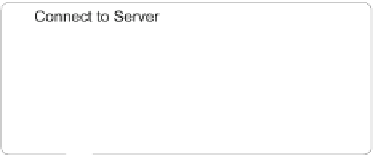Database Reference
In-Depth Information
Looping
Activity
Looping
Subprocess
+
Fig. 8.6
Activity and subprocess loops
Fig. 8.7
An example of a subprocess loop
at the end of the iteration. In the example of Fig.
8.7
,werepresentatask
of an ETL process that connects to a server. At a high abstraction level,
the subprocess activity hides the details. It has the loop symbol attached
(a curved arrow), indicating that the subprocess is executed repeatedly until
an ending condition is reached. When we expand the subprocess, we can
see what happens within it: the server waits for 3min (this waiting task
is represented by the time event). If the connection is not established, the
request for the connection is launched again. After 15min (another time
event), if the connection was not reached, the task is stopped, and an error
e-mail is sent (a message event).
A
swimlane
(see Fig.
8.8
) is a structuring object that comprises
pools
and
lanes
. Both of them are used to define process boundaries. Only messages
are allowed between two pools, not sequence flows. In other words, a workflow
must be contained in only one pool. However, a pool may be subdivided into
several lanes, which represent roles or services in the enterprise. Lanes within
a pool do not have any special constraint, and thus sequence flows may cross
a lane freely. We give an example in the next section.
Artifacts
are used to add information to a diagram. There are three types
of artifacts. A
data object
represents either data that are input to a process,
data resulting from a process, data that needs to be collected, or data that
needs to be stored. A
group
organizes tasks or processes that have some kind
of significance in the overall model. A group does not affect the flow in the
diagram.
Annotations
are used to add extra information to flow objects.
For example, an annotation for an activity in an ETL process can indicate











































Search WWH ::

Custom Search